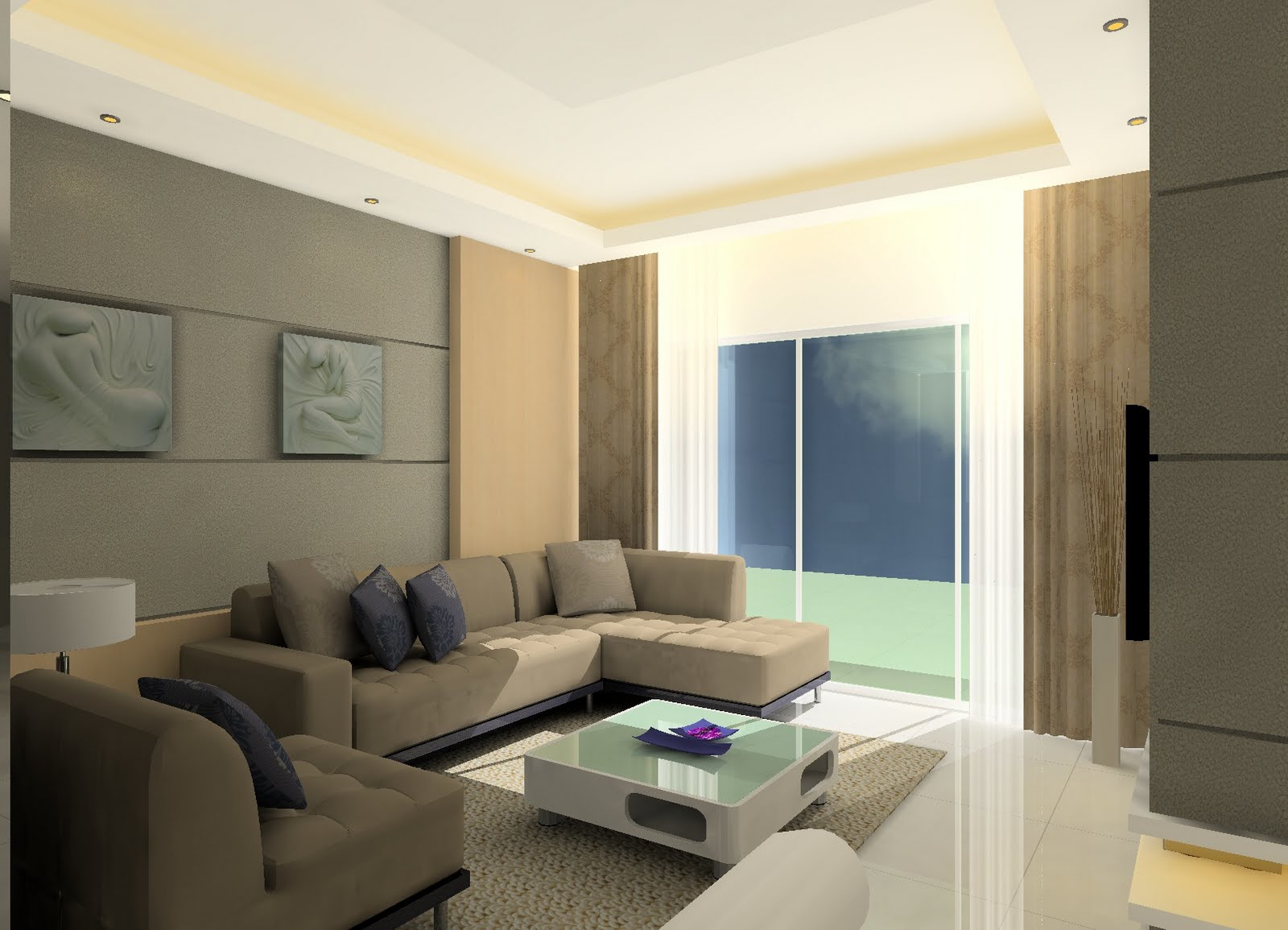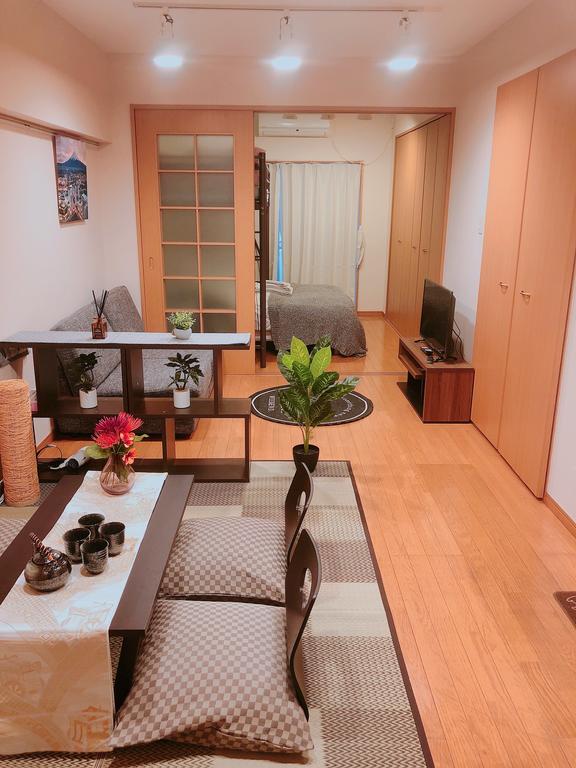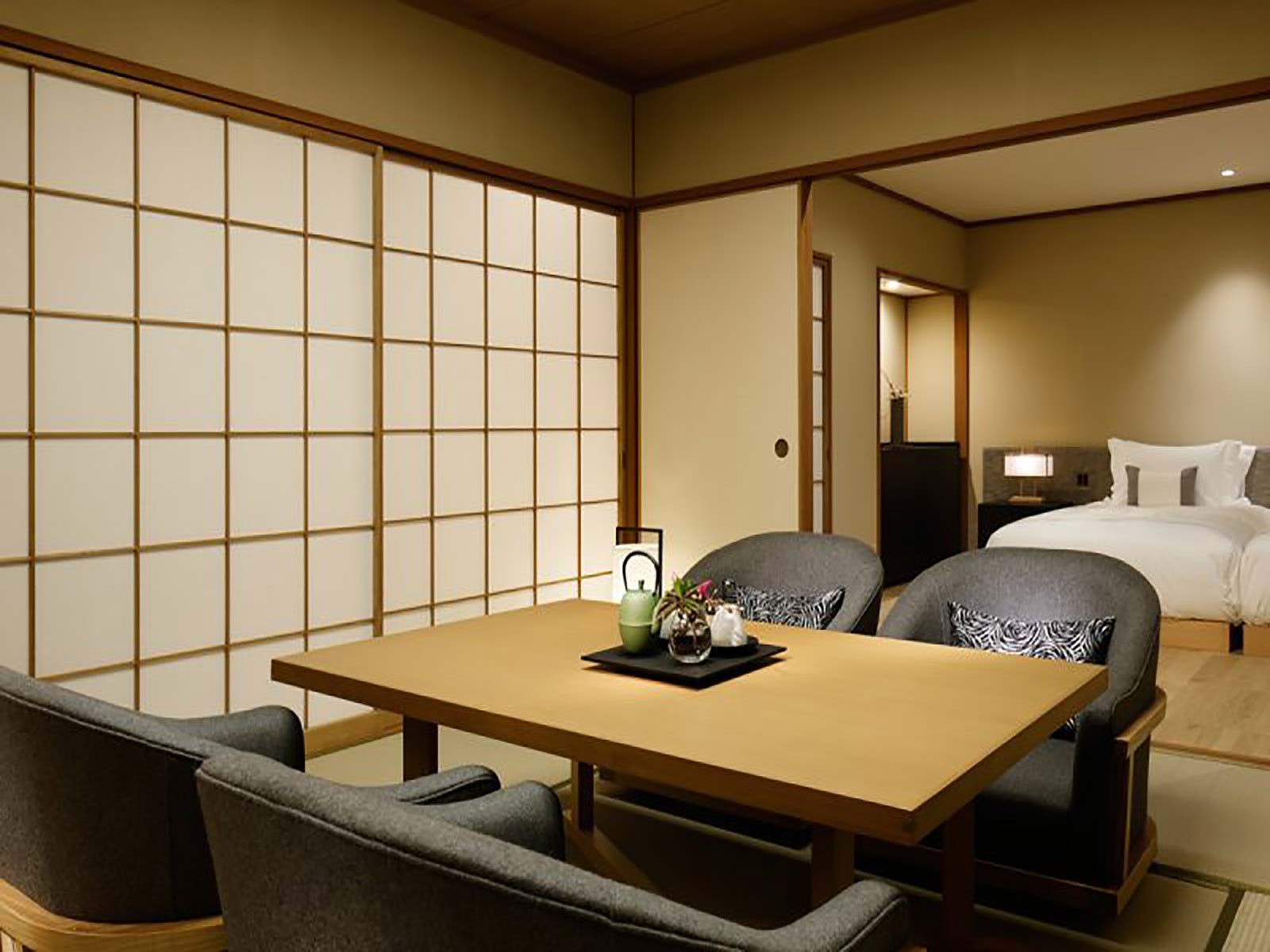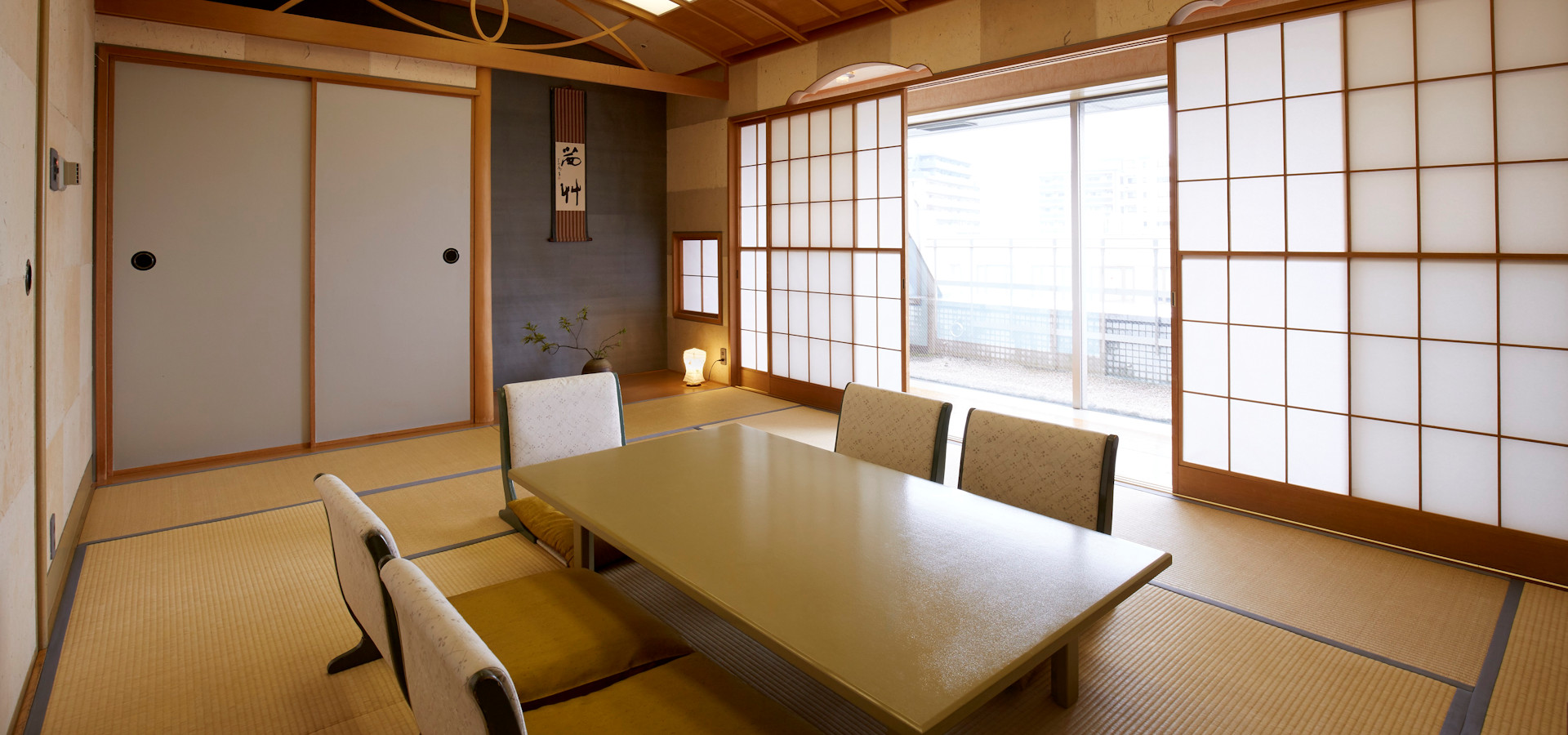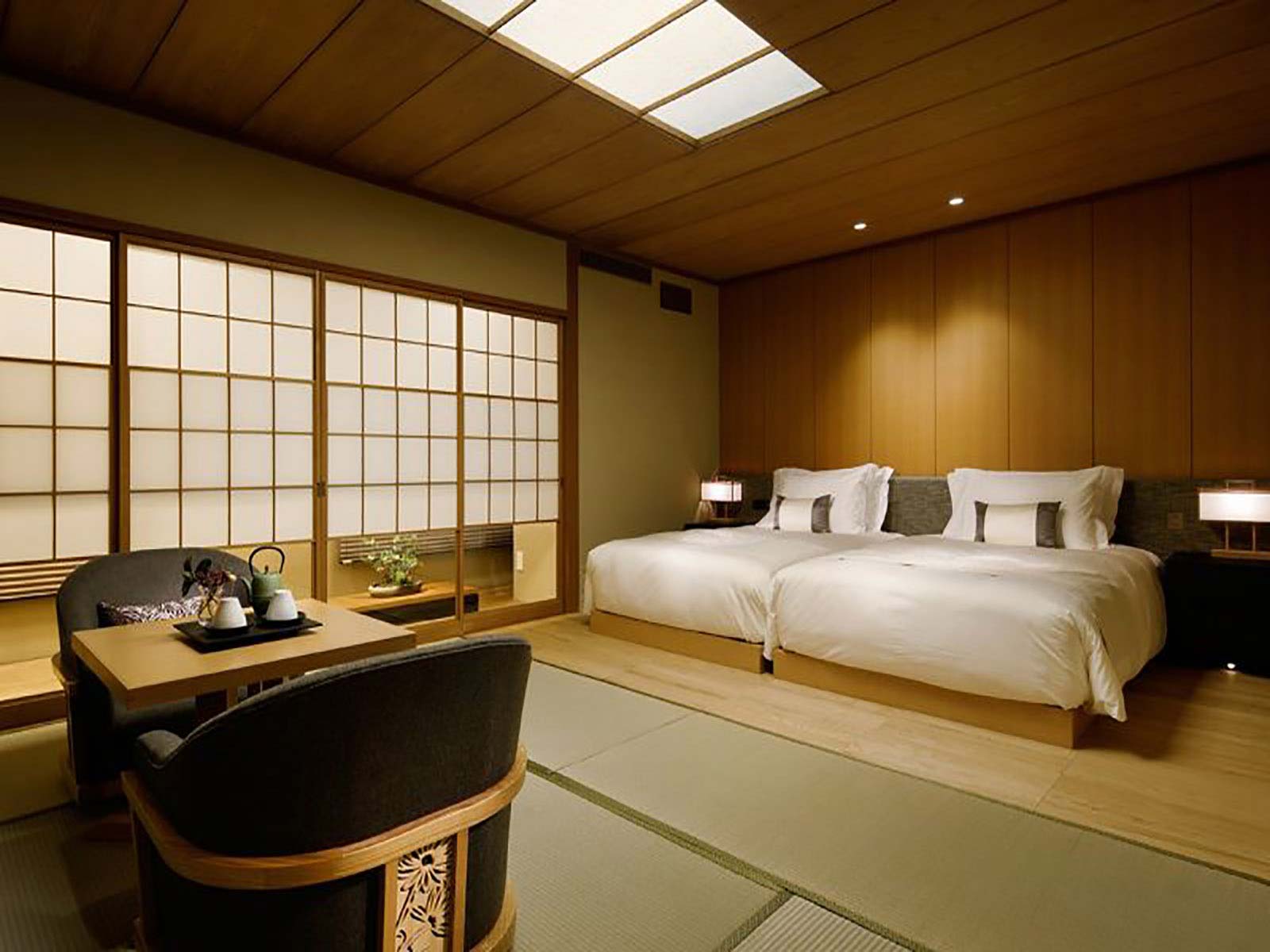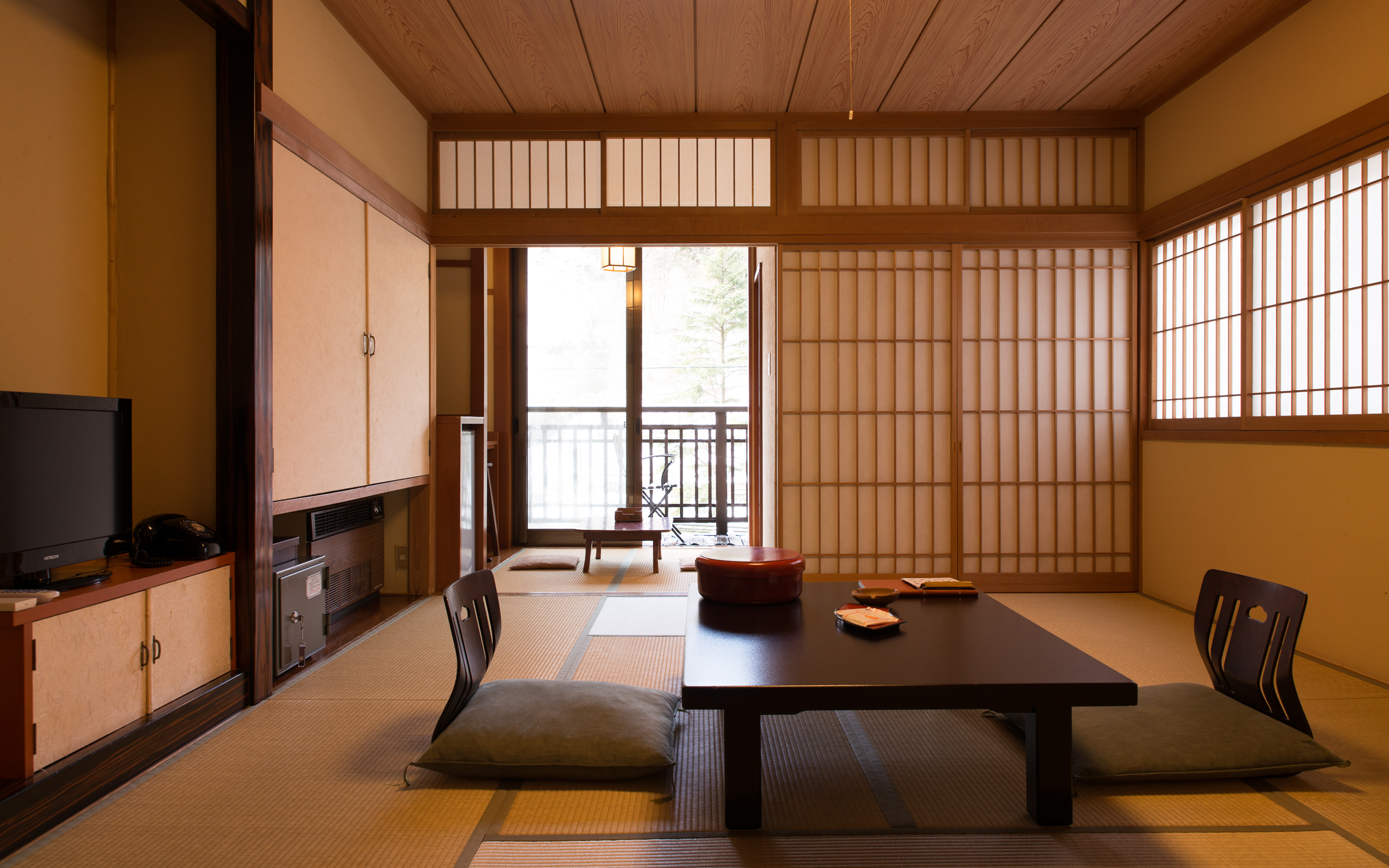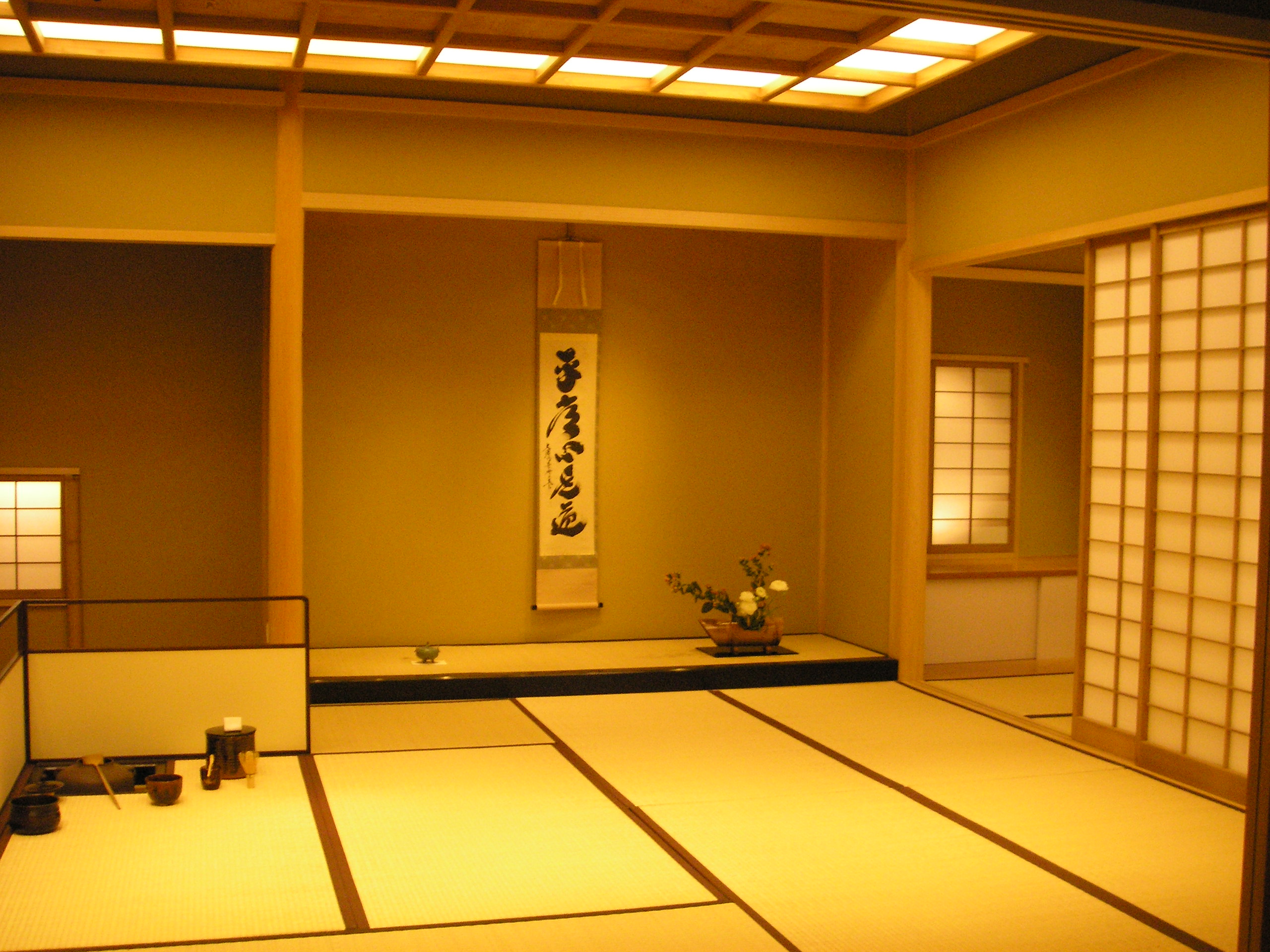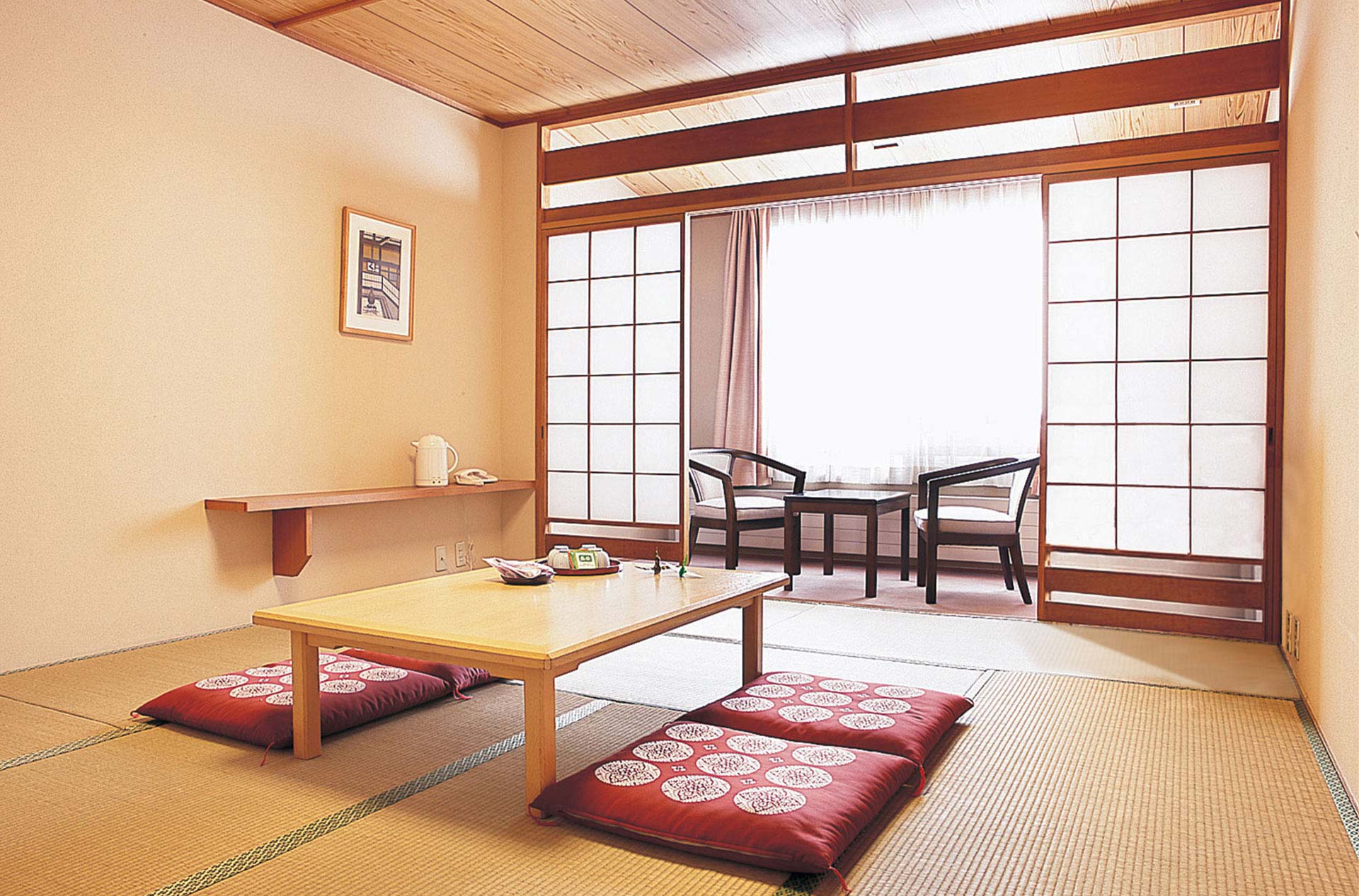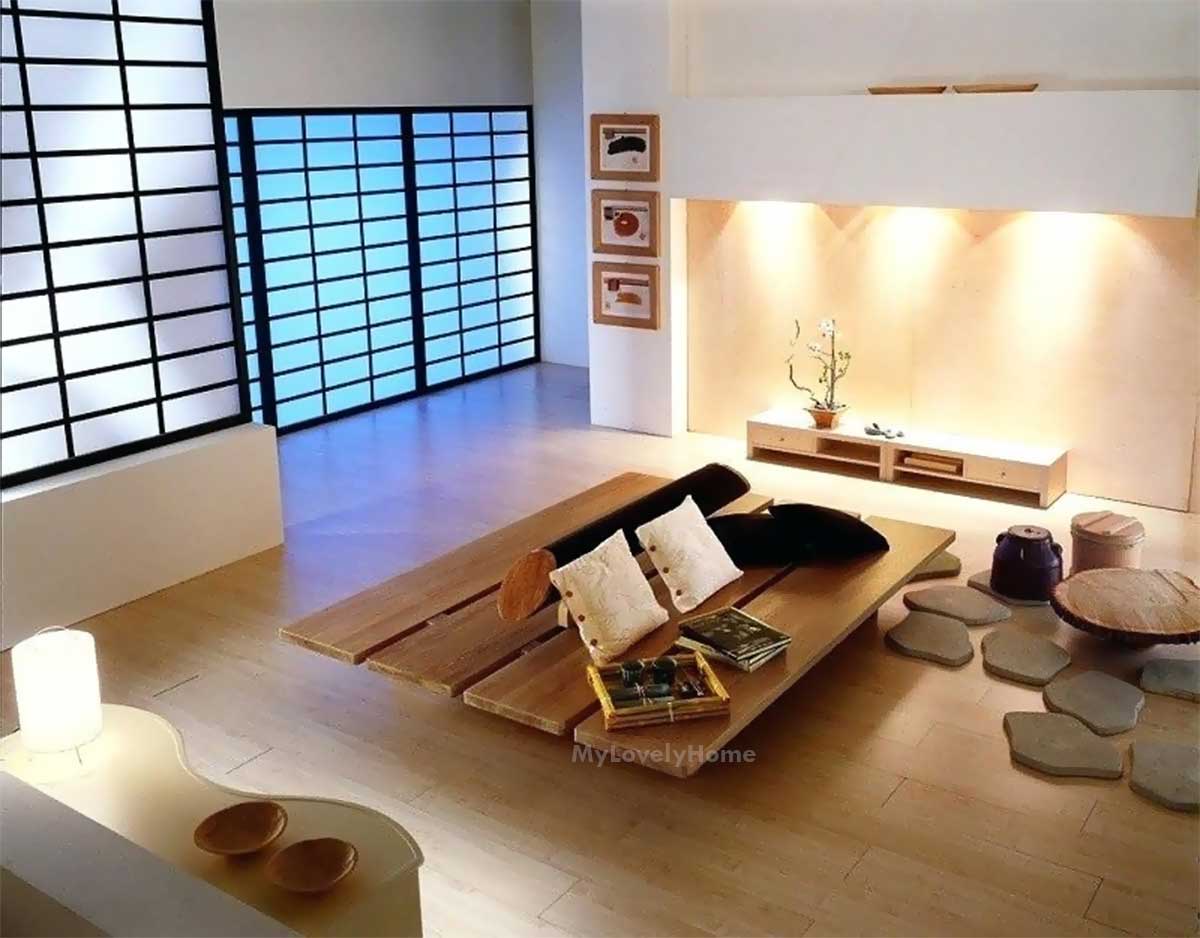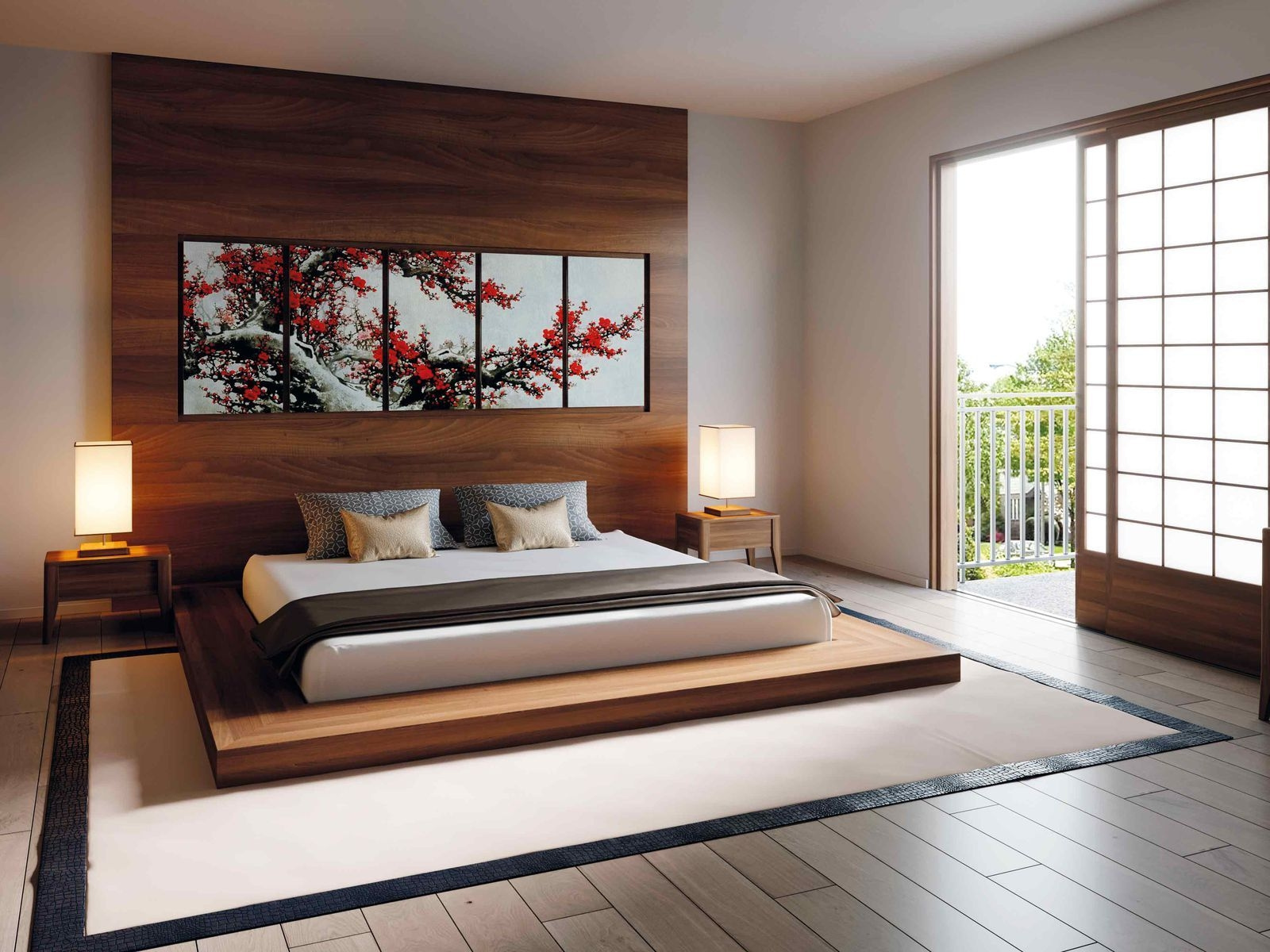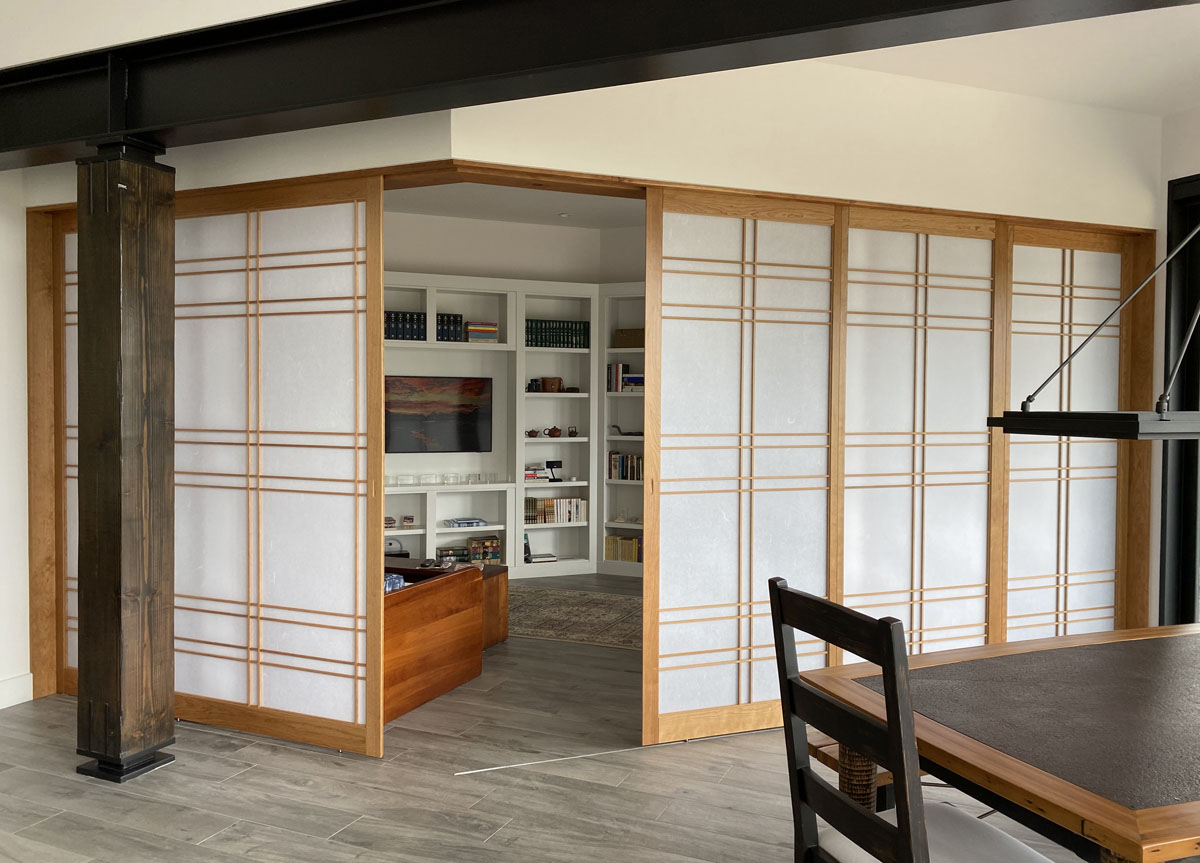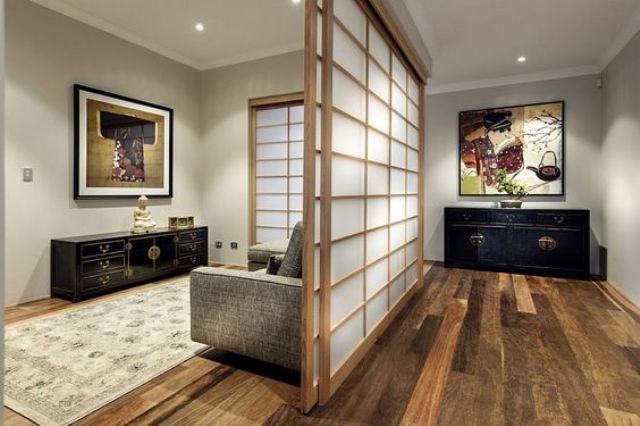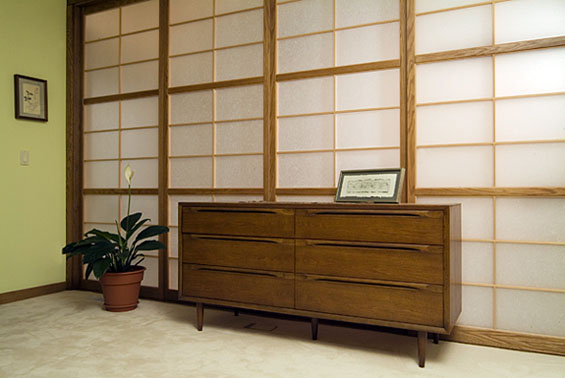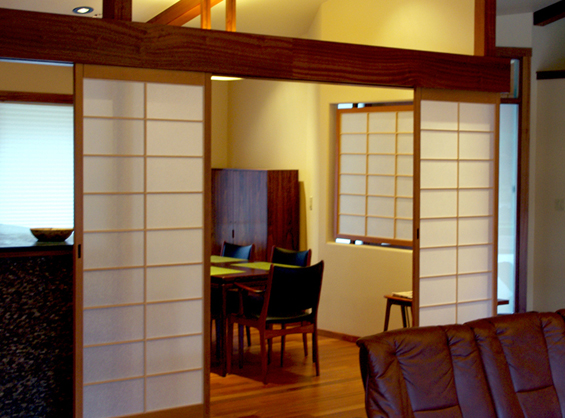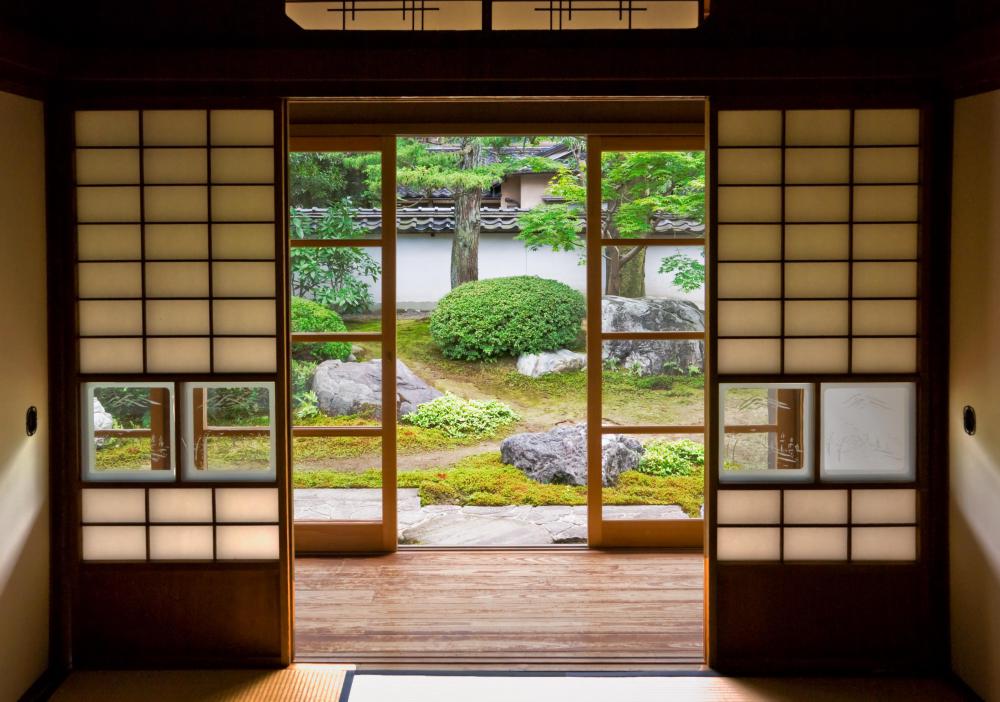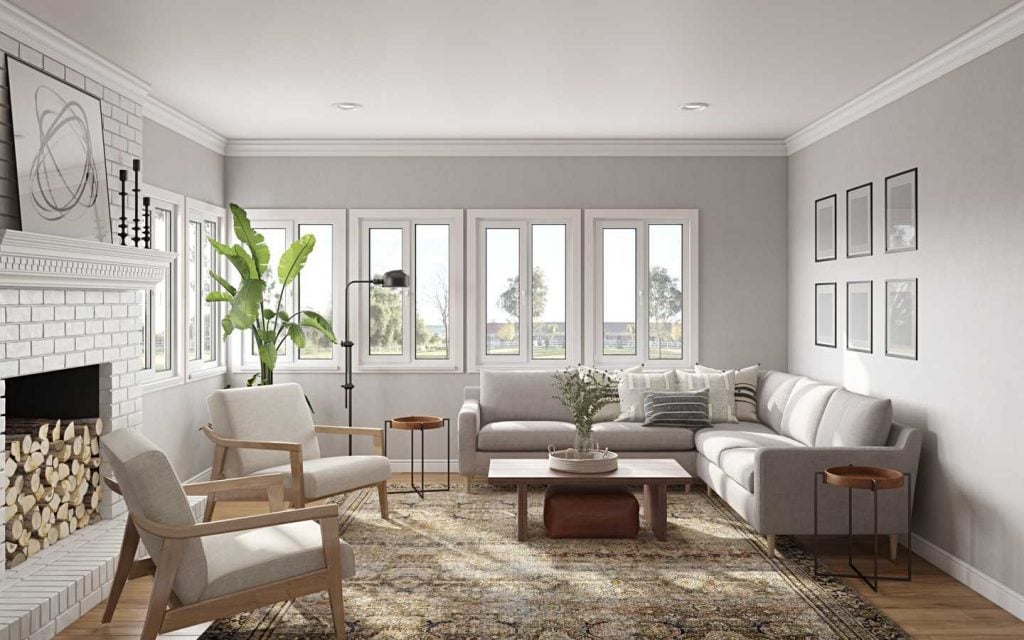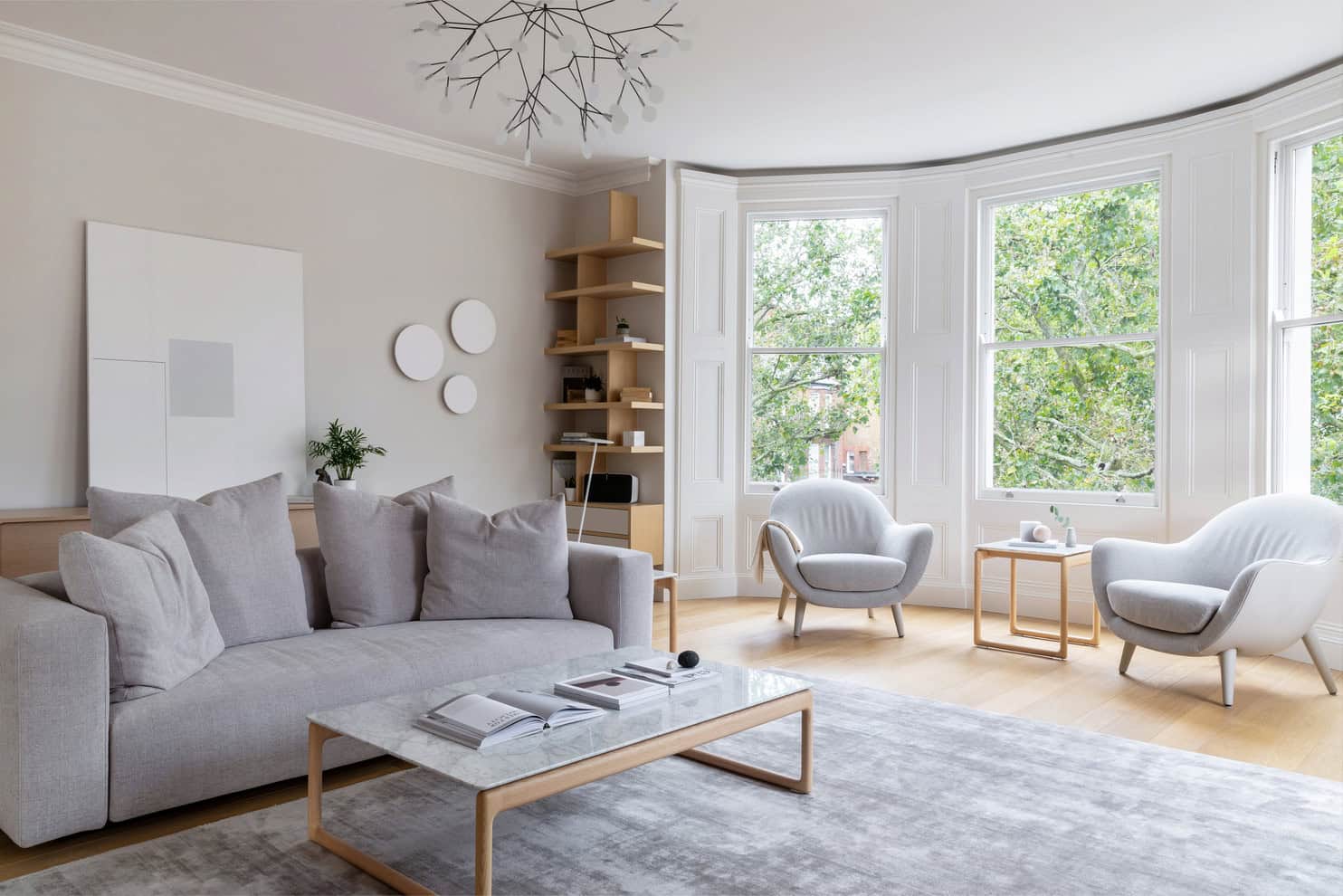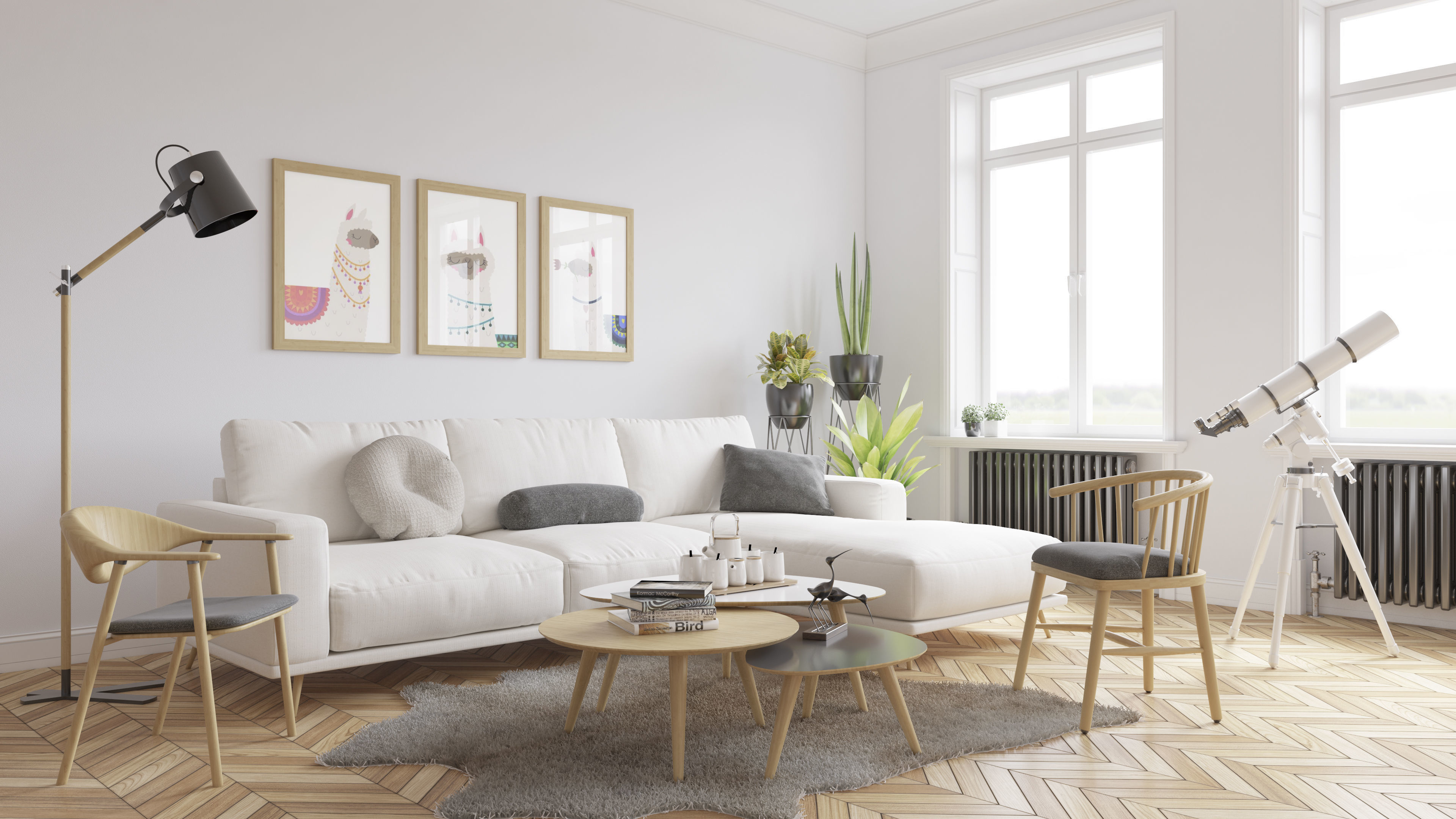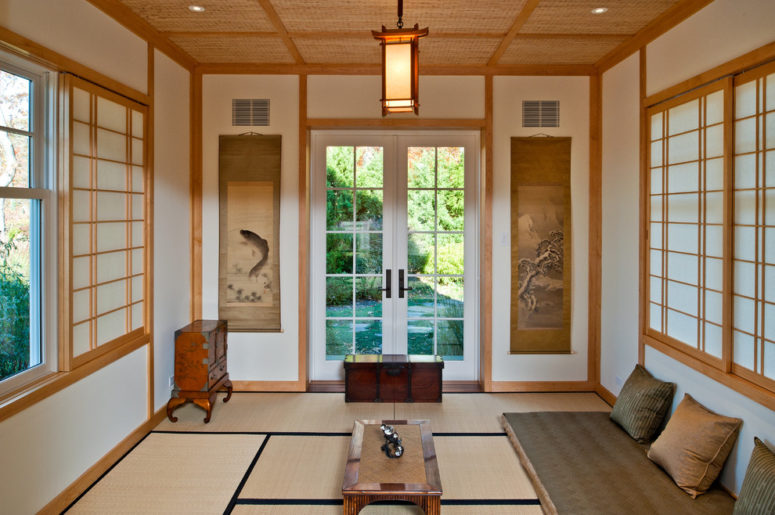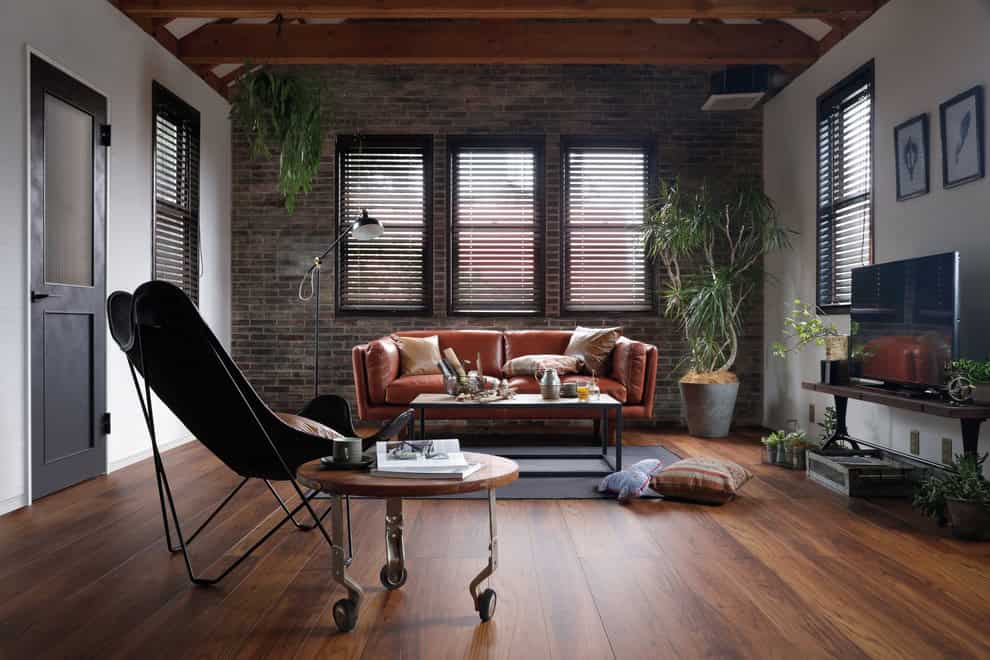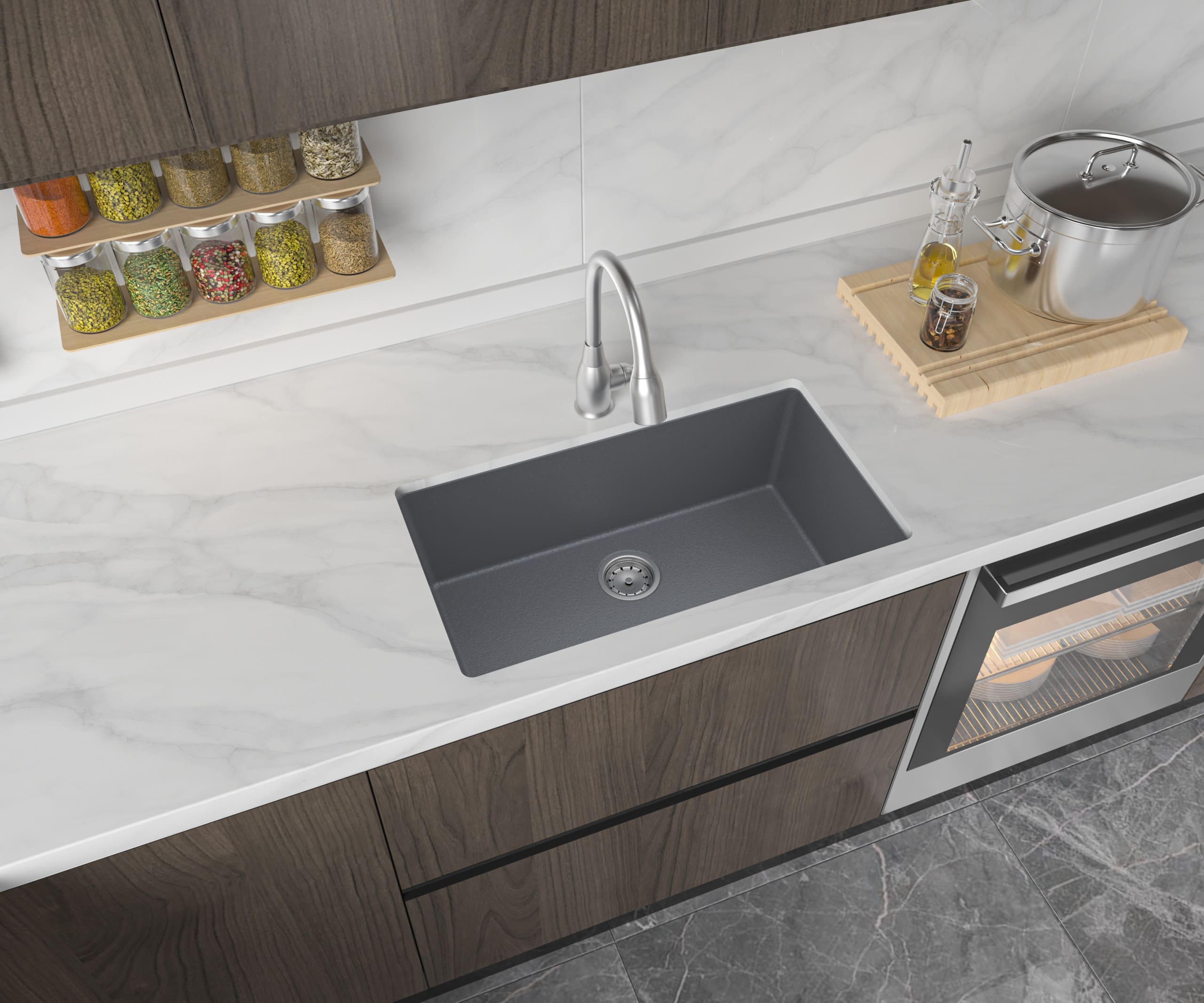The traditional Japanese living room style, also known as washitsu, is deeply rooted in the country's history and culture. It is characterized by simplicity, harmony, and a strong connection to nature. One of the main features of this style is the use of tatami mats on the floor, which are made of rice straw and provide a natural and comfortable surface for sitting and sleeping. Another key element of traditional Japanese living rooms is the use of shoji screens, which are sliding doors made of paper and wood frames. These screens not only add a touch of elegance to the room, but also allow for natural light to filter through, creating a warm and inviting atmosphere. The color palette in traditional Japanese living rooms is typically neutral, with earthy tones such as beige, brown, and green dominating the space. Furniture is kept to a minimum, with low tables and cushions used for seating. Decorative elements such as ikebana (flower arrangements) and kakejiku (hanging scrolls) are often used to add a touch of beauty and tranquility to the room.Traditional Japanese Living Room Styles
While traditional Japanese living room styles remain popular, many people are now incorporating modern elements into their living spaces. This style combines the simplicity and natural elements of traditional Japanese design with contemporary touches, resulting in a sleek and minimalist look. In modern Japanese living rooms, you will find clean lines, geometric shapes, and a mix of materials such as wood, metal, and glass. The color palette is still mostly neutral, but with pops of bold colors here and there. Furniture is often low to the ground and multi-functional, allowing for a more open and spacious feel in the room. One of the key features of modern Japanese living rooms is the use of technology. From smart lighting systems to sleek entertainment centers, technology is seamlessly integrated into the design, making the room both functional and aesthetically pleasing.Modern Japanese Living Room Styles
Minimalism is a popular design trend in Japan, and this is reflected in their living room styles as well. Minimalist Japanese living rooms are all about simplicity, functionality, and creating a sense of calm and serenity. The color palette in minimalist Japanese living rooms is usually monochromatic, with shades of white, black, and grey dominating the space. Furniture is kept to a minimum, with clean lines and simple designs. The focus is on quality over quantity, with each piece carefully selected to serve a specific purpose. In addition to a minimalist design, these living rooms also incorporate elements of ma, which is the concept of negative space. This allows for a sense of openness and breathing room, creating a peaceful and uncluttered environment.Minimalist Japanese Living Room Styles
Feng shui, the ancient Chinese practice of harmonizing energy in a space, has also had a significant influence on Japanese living room styles. In feng shui, the layout and flow of a room are crucial in creating a balanced and harmonious environment. In a feng shui Japanese living room, furniture placement is key. The main seating area is typically positioned against a solid wall, symbolizing support and stability. The use of natural materials, such as wood and stone, is also important in creating a harmonious space. Plants and water features are often incorporated to bring in positive energy and create a sense of tranquility. In addition to the physical elements, feng shui also focuses on incorporating the five elements (wood, fire, earth, metal, and water) into the space to create a balanced energy flow. This can be achieved through the use of colors, shapes, and textures in the room.Feng Shui Japanese Living Room Styles
The use of tatami mats, as mentioned earlier, is a defining feature of traditional Japanese living rooms. However, there is also a specific living room style that centers around these mats and their unique design. In a tatami Japanese living room, the mats cover the entire floor, creating a warm and cozy atmosphere. The mats are also used as a measurement unit for the size of the room, with a standard size being six tatami mats. The mats not only serve as a comfortable surface for sitting and sleeping, but they also have a symbolic meaning in Japanese culture, representing the unity of family and home. In addition to the mats, shoji screens, low tables, and floor cushions are also commonly found in tatami Japanese living rooms. This style is perfect for those looking for a traditional and authentic Japanese living experience.Tatami Japanese Living Room Styles
Zen, a school of Buddhism that emphasizes meditation and intuition, has heavily influenced Japanese culture and design. This is evident in the Zen Japanese living room style, which focuses on creating a peaceful and tranquil space for relaxation. The color palette in Zen Japanese living rooms is typically neutral and earthy, with shades of green, brown, and beige. Furniture is kept to a minimum, with low tables, floor cushions, and natural materials such as bamboo and wood being used. The room is also designed to allow for natural light and fresh air to flow in, further promoting a sense of calmness and harmony. The incorporation of natural elements is also important in Zen Japanese living rooms, with plants, stones, and water features being used to create a connection to nature and promote a sense of balance and serenity.Zen Japanese Living Room Styles
As mentioned earlier, shoji screens are a common feature in traditional Japanese living rooms. However, there is also a specific style that revolves around these screens, known as shoin-zukuri. In this style, the shoji screens are not only used as doors, but also as partitions to divide the room into smaller spaces. This allows for a more versatile use of the room and creates a sense of privacy when needed. The screens are often adorned with intricate designs and patterns, adding an elegant touch to the space. In addition to the screens, shoin-zukuri Japanese living rooms also feature built-in shelves and cabinets, known as tokonoma, where decorative items and kakejiku scrolls are displayed. This style is perfect for those looking for a traditional and refined Japanese living room.Shoji Screen Japanese Living Room Styles
With its strong connection to nature, it's no surprise that many Japanese living room styles incorporate natural elements into their design. However, there is a specific style that centers around this concept, known as natural Japanese living room style. In this style, the use of natural materials such as wood, stone, and bamboo is key. These materials not only add a warm and organic feel to the space, but they also reflect the Japanese philosophy of wabi-sabi, which embraces imperfection and impermanence. Furniture is often handmade and simple in design, with a focus on the natural beauty of the materials used. Plants, both real and artificial, are also a common feature in natural Japanese living rooms, bringing a touch of nature indoors. This style is perfect for those looking for a calm and soothing living space.Natural Japanese Living Room Styles
Scandinavian and Japanese design may seem like an unlikely combination, but they actually complement each other quite well. Both styles emphasize simplicity, functionality, and a connection to nature, making them a perfect match. In Scandinavian-Japanese living room styles, you will find clean lines, a neutral color palette, and a mix of natural materials such as wood and leather. Furniture is often minimalist and multi-functional, with a focus on comfort and practicality. The room is also designed to allow for natural light and fresh air to flow in, creating a bright and airy space. This style is perfect for those who appreciate the simplicity and functionality of both Scandinavian and Japanese design.Scandinavian-Japanese Living Room Styles
Industrial design has gained popularity in recent years, and it has also made its way into Japanese living room styles. This style combines the natural elements of Japanese design with the raw and edgy look of industrial design. In industrial Japanese living rooms, you will find a mix of materials such as wood, metal, and concrete. The color palette is typically neutral, with shades of grey, black, and brown dominating the space. Furniture is often a combination of vintage and modern pieces, with a focus on functionality and industrial aesthetics. Plants and natural elements are also incorporated into industrial Japanese living rooms, softening the industrial look and adding a touch of warmth. This style is perfect for those looking for a unique and trendy living space.Industrial Japanese Living Room Styles
The Importance of Minimalism in Japanese Living Room Styles
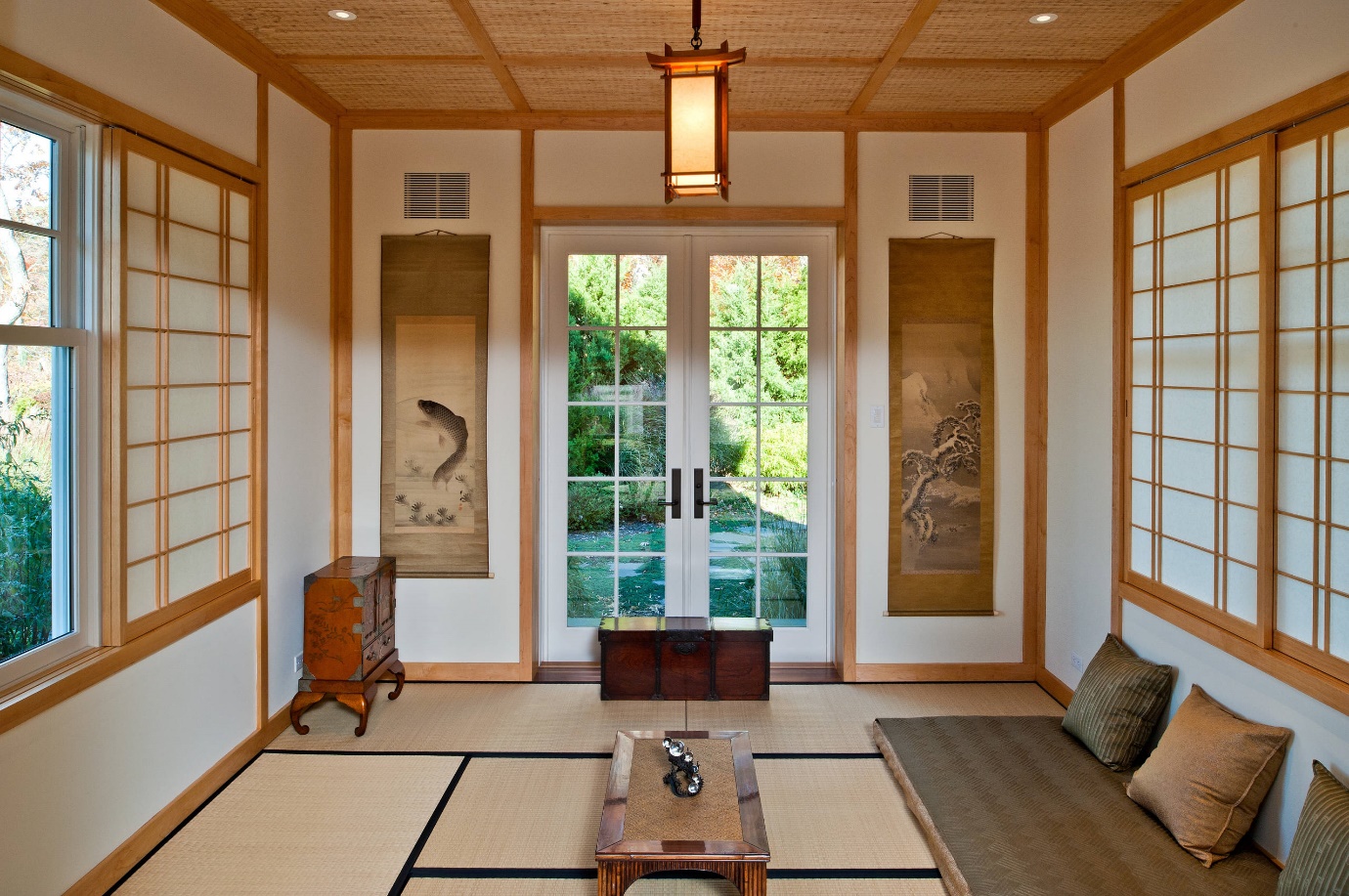
Embracing Simplicity
 Japan is known for its minimalist approach to design and this is especially evident in their living rooms. The Japanese believe in the concept of "less is more" and this is reflected in their living room styles. Unlike Western designs which tend to be cluttered and filled with various decorative items, Japanese living rooms focus on creating a sense of calm and simplicity.
Japan is known for its minimalist approach to design and this is especially evident in their living rooms. The Japanese believe in the concept of "less is more" and this is reflected in their living room styles. Unlike Western designs which tend to be cluttered and filled with various decorative items, Japanese living rooms focus on creating a sense of calm and simplicity.
Utilizing Natural Elements
 Another key aspect of Japanese living room styles is the use of natural elements. This includes incorporating elements such as wood, bamboo, and stone into the design. These materials not only add a touch of nature to the space but also bring a sense of warmth and tranquility. Many Japanese living rooms also feature large windows to allow ample natural light to enter the space, creating a bright and airy atmosphere.
Another key aspect of Japanese living room styles is the use of natural elements. This includes incorporating elements such as wood, bamboo, and stone into the design. These materials not only add a touch of nature to the space but also bring a sense of warmth and tranquility. Many Japanese living rooms also feature large windows to allow ample natural light to enter the space, creating a bright and airy atmosphere.
Creating Harmony
 In Japanese living room styles, every element is carefully chosen and placed to create a sense of balance and harmony. This includes furniture placement, color scheme, and even the choice of decorative items. The goal is to create a space that is both functional and aesthetically pleasing, without being overwhelming. This attention to detail and balance is what makes Japanese living rooms so inviting and calming.
In Japanese living room styles, every element is carefully chosen and placed to create a sense of balance and harmony. This includes furniture placement, color scheme, and even the choice of decorative items. The goal is to create a space that is both functional and aesthetically pleasing, without being overwhelming. This attention to detail and balance is what makes Japanese living rooms so inviting and calming.
Embracing Wabi-Sabi
 Wabi-sabi is a traditional Japanese aesthetic concept that celebrates imperfection and impermanence. This is also reflected in Japanese living room styles, where imperfect and natural elements are embraced. For example, a wooden coffee table with natural knots and imperfections is seen as more beautiful than a perfectly polished and smooth one. This concept adds a unique and authentic touch to Japanese living room designs.
Wabi-sabi is a traditional Japanese aesthetic concept that celebrates imperfection and impermanence. This is also reflected in Japanese living room styles, where imperfect and natural elements are embraced. For example, a wooden coffee table with natural knots and imperfections is seen as more beautiful than a perfectly polished and smooth one. This concept adds a unique and authentic touch to Japanese living room designs.
Incorporating Zen Principles
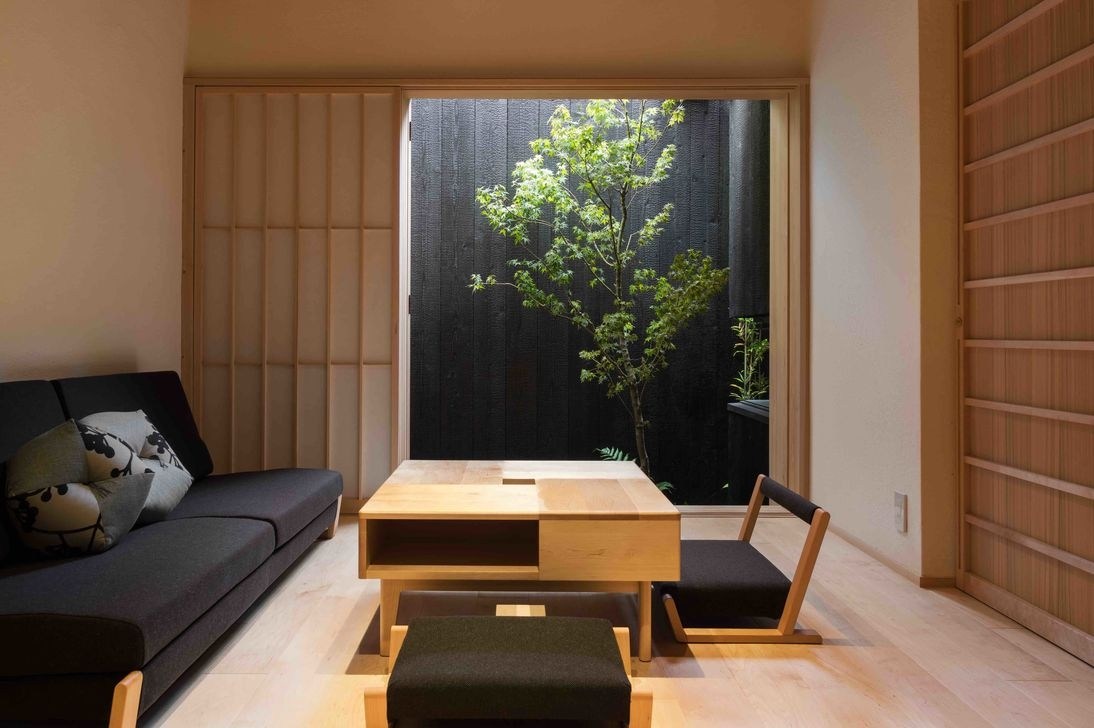 Zen principles, such as mindfulness and simplicity, are deeply ingrained in Japanese culture and are also evident in their living room styles. The use of neutral colors, clean lines, and open spaces all contribute to creating a Zen-like atmosphere in the living room. This allows for a peaceful and calming environment, perfect for relaxation and unwinding after a long day.
In conclusion,
Japanese living room styles are all about embracing simplicity, natural elements, and creating a sense of harmony and balance. By incorporating these key elements, one can create a space that not only looks beautiful but also promotes a sense of calm and tranquility. So, if you're looking to revamp your living room, consider incorporating some Japanese design principles for a peaceful and inviting space.
Zen principles, such as mindfulness and simplicity, are deeply ingrained in Japanese culture and are also evident in their living room styles. The use of neutral colors, clean lines, and open spaces all contribute to creating a Zen-like atmosphere in the living room. This allows for a peaceful and calming environment, perfect for relaxation and unwinding after a long day.
In conclusion,
Japanese living room styles are all about embracing simplicity, natural elements, and creating a sense of harmony and balance. By incorporating these key elements, one can create a space that not only looks beautiful but also promotes a sense of calm and tranquility. So, if you're looking to revamp your living room, consider incorporating some Japanese design principles for a peaceful and inviting space.




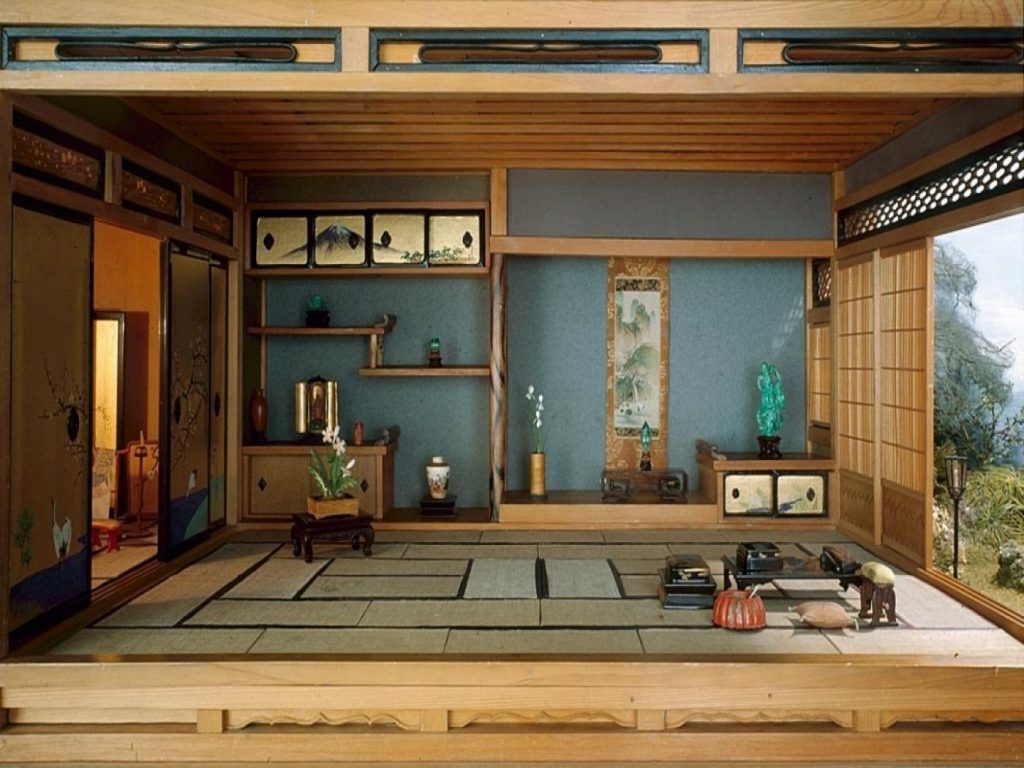
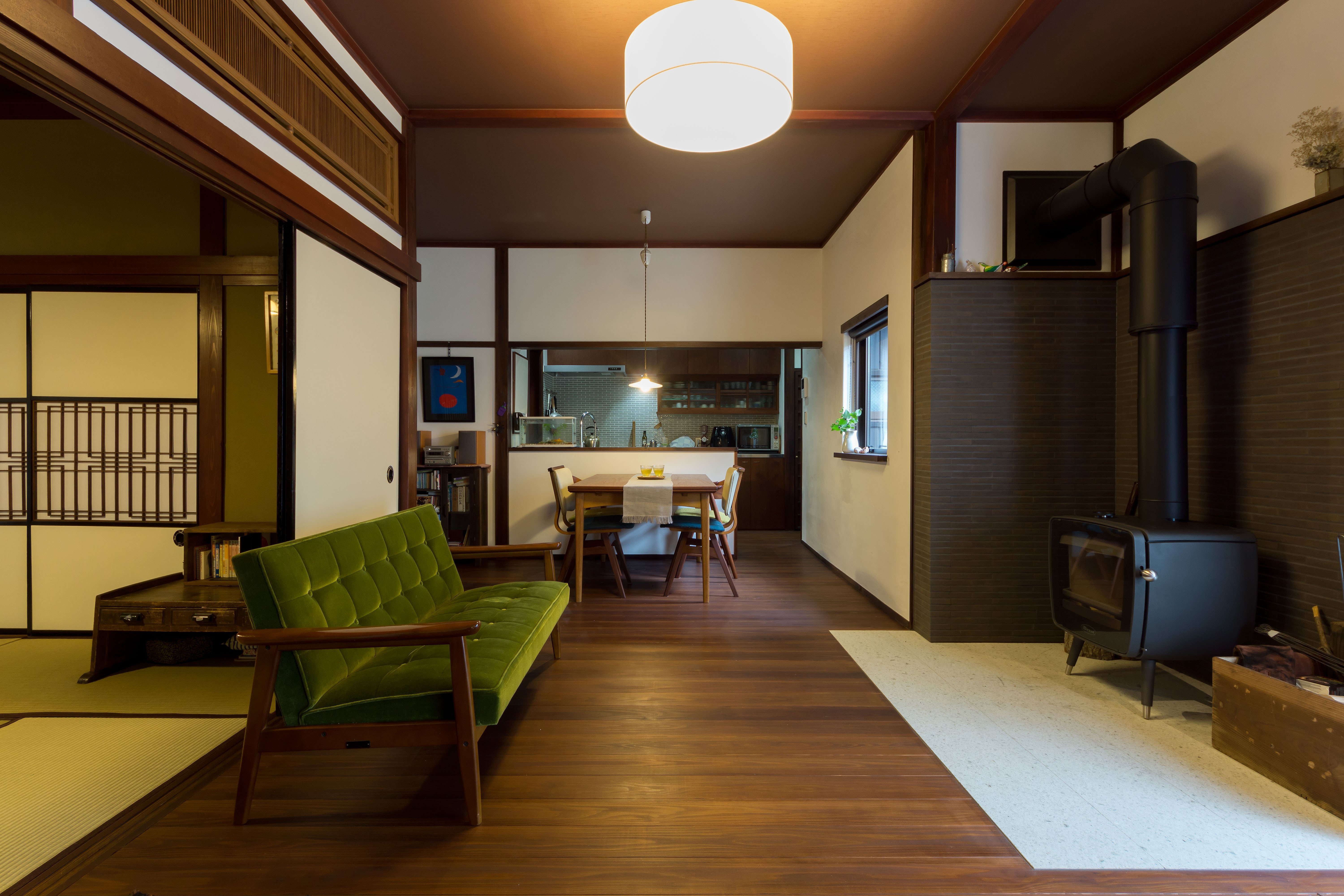

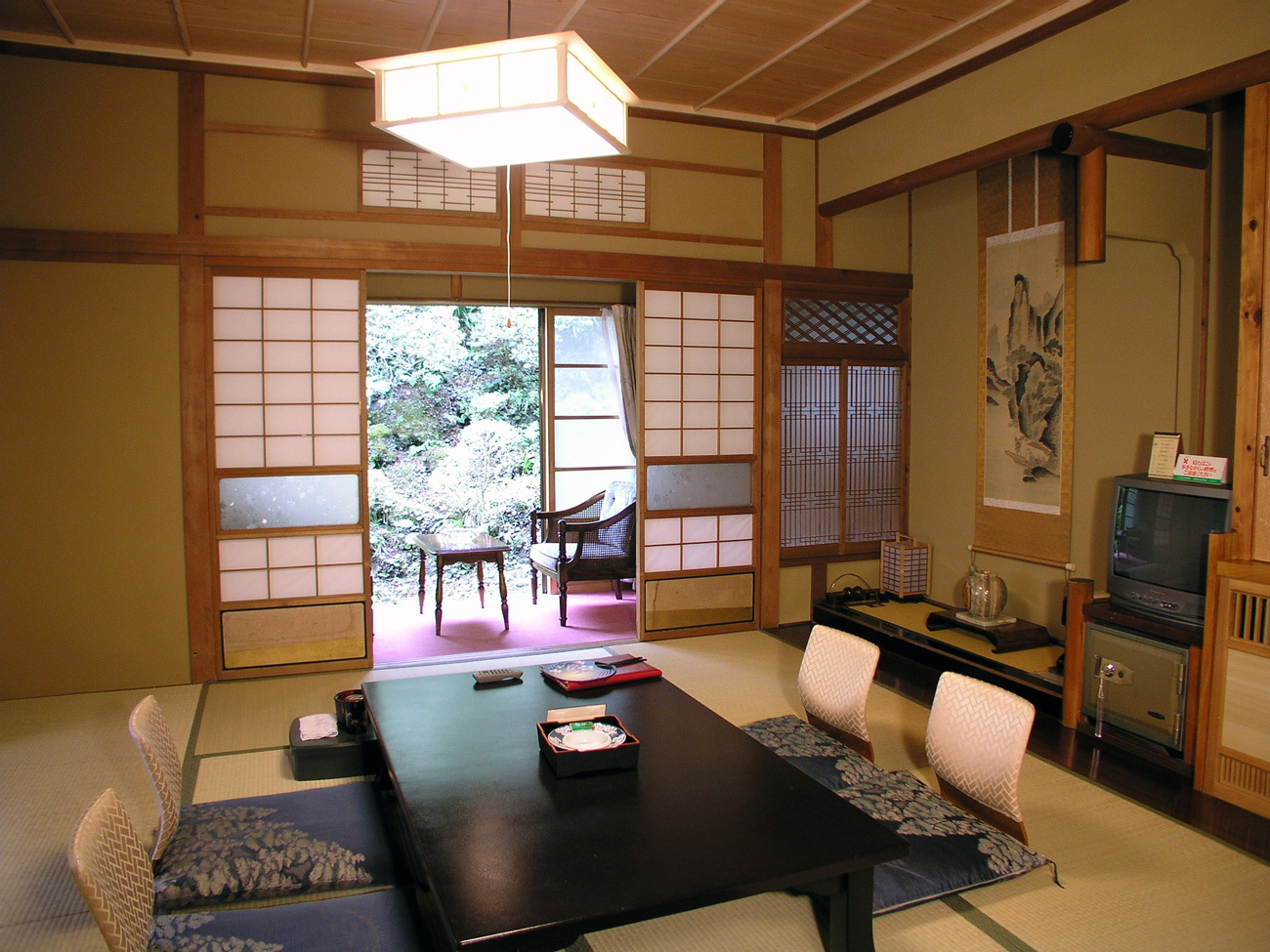



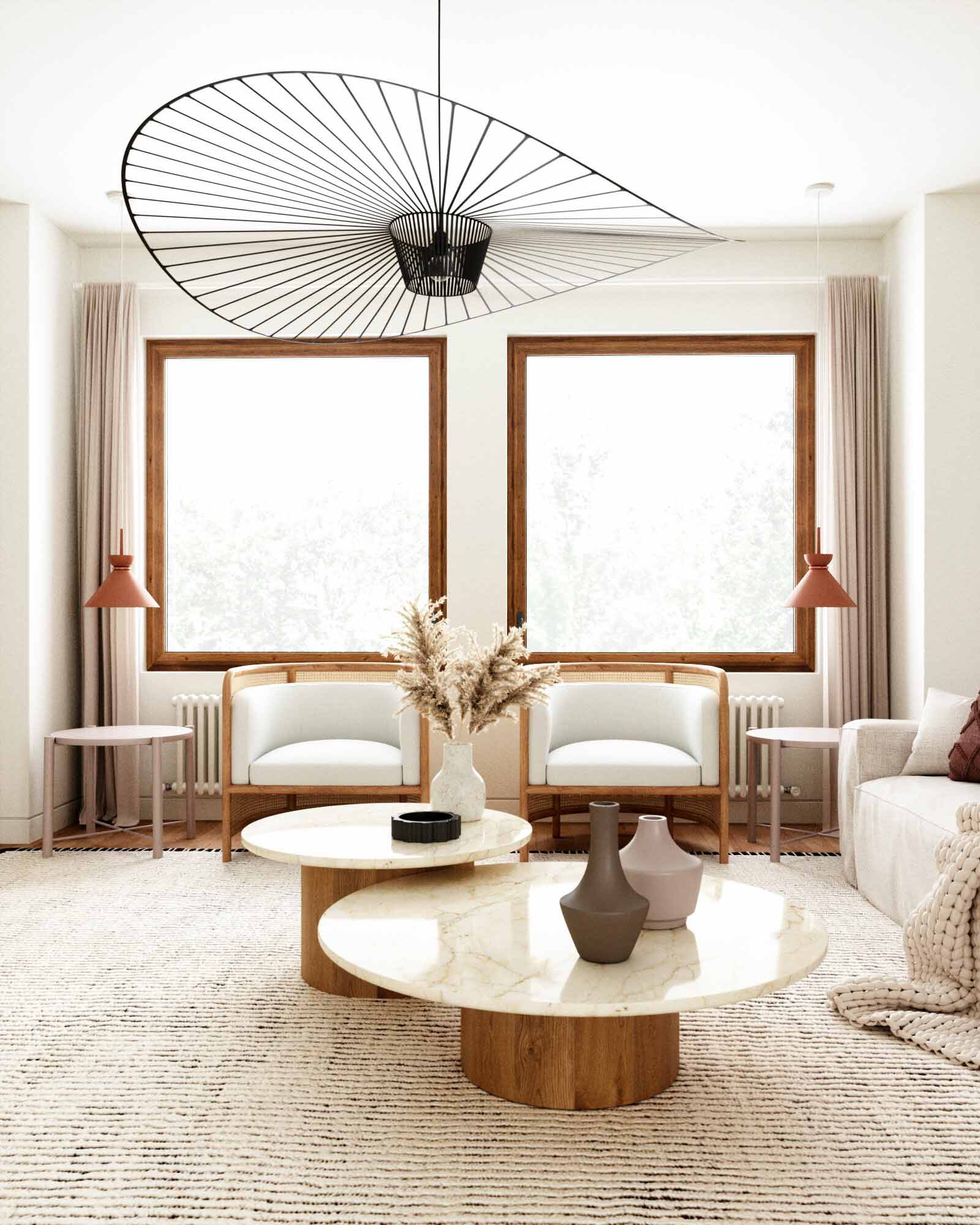

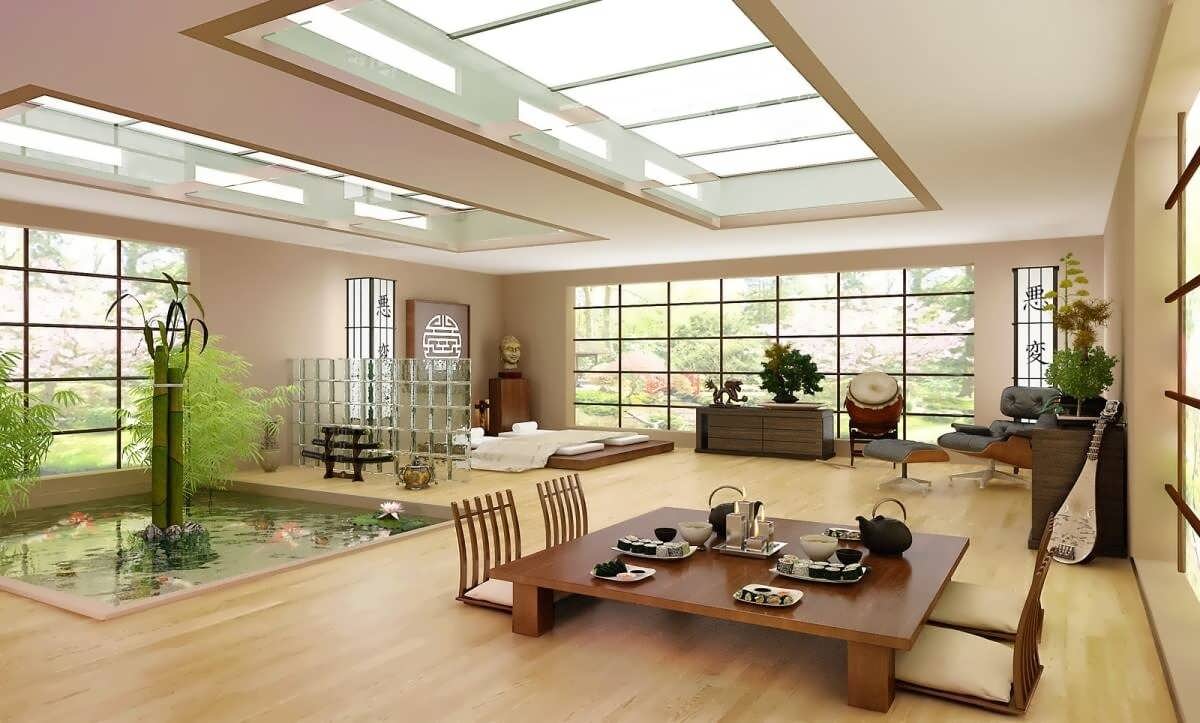




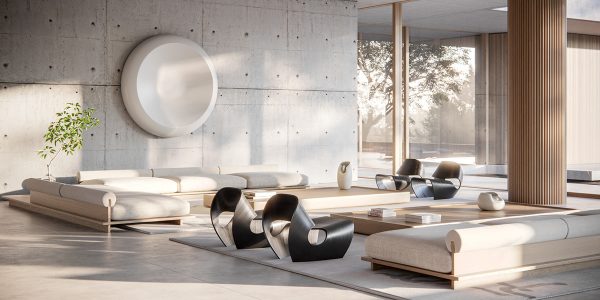


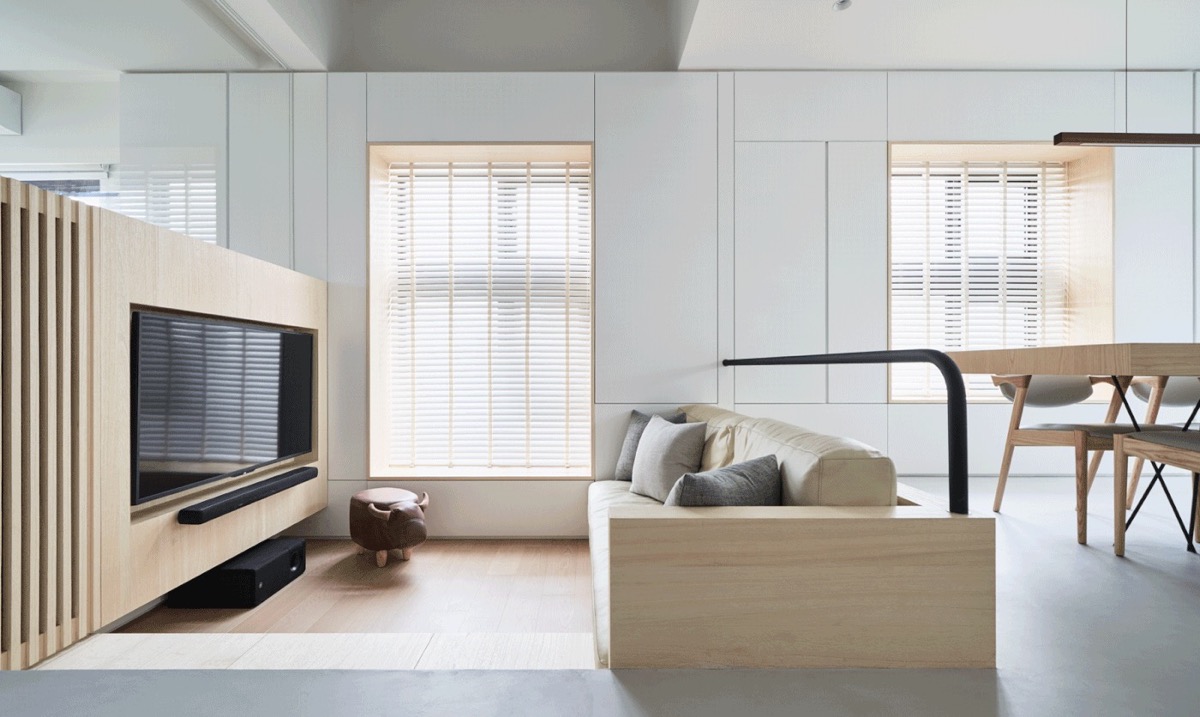
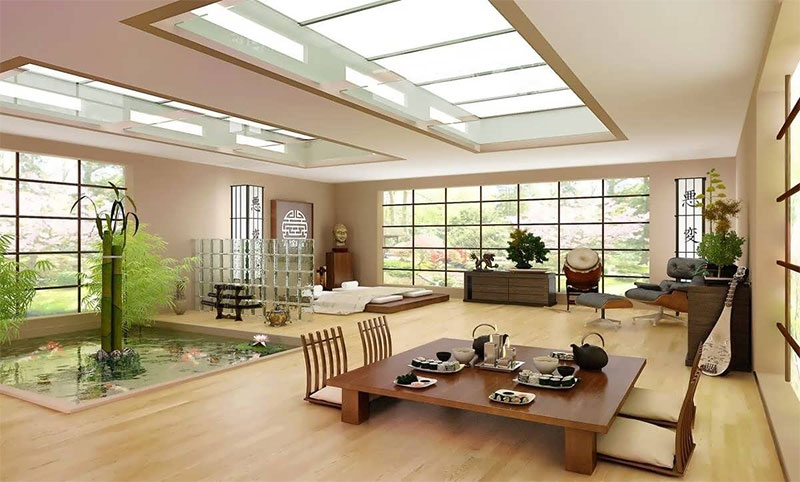





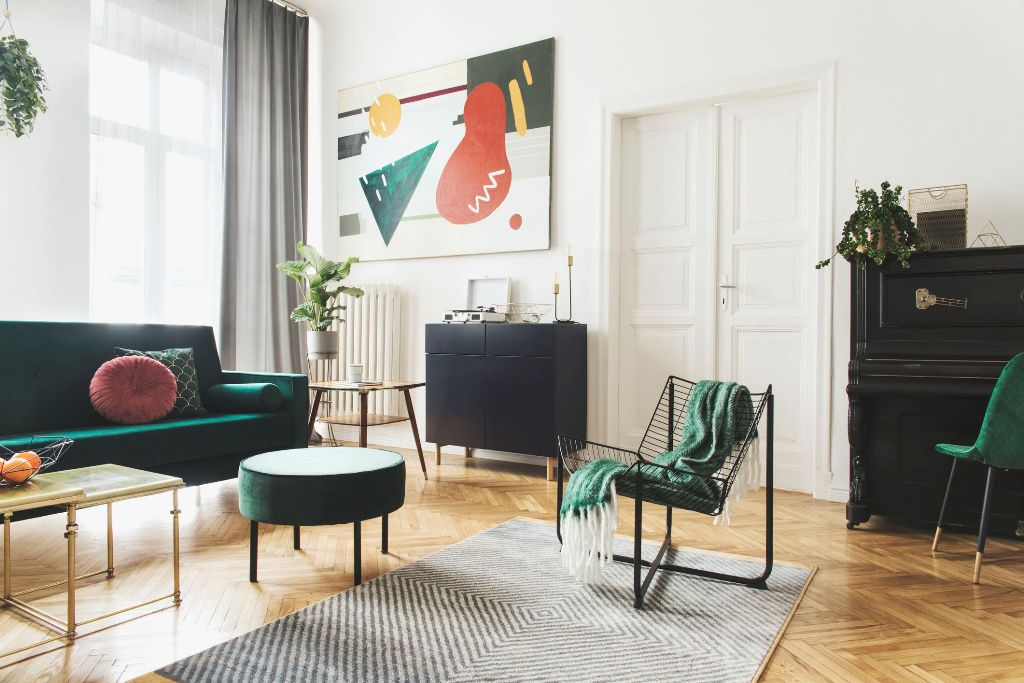
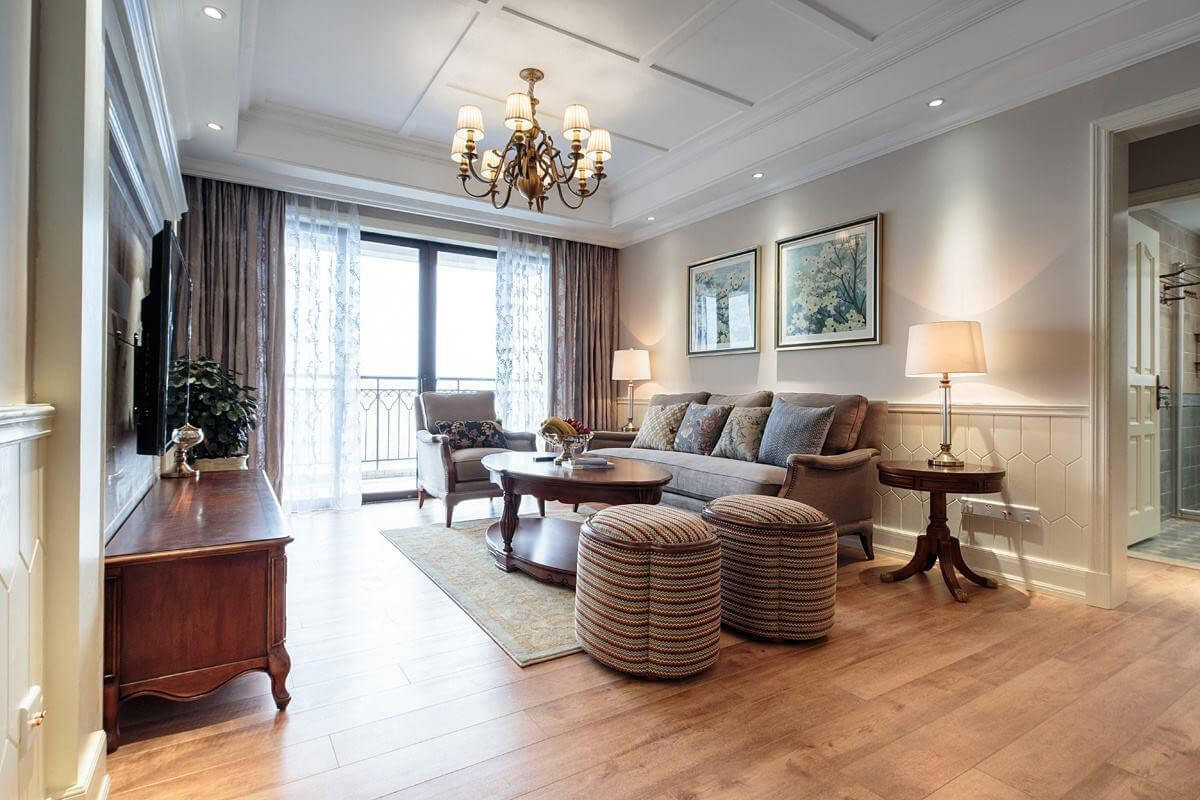

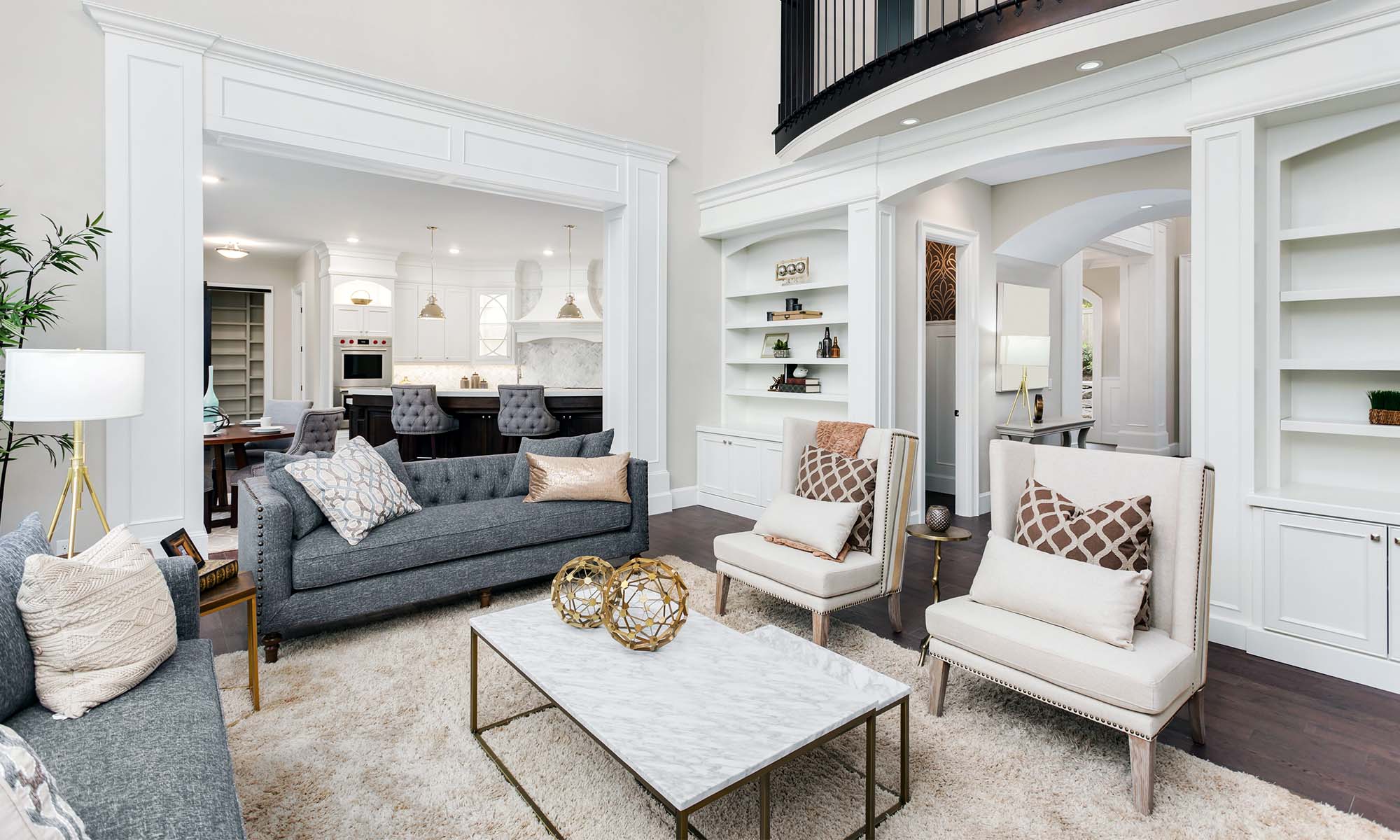
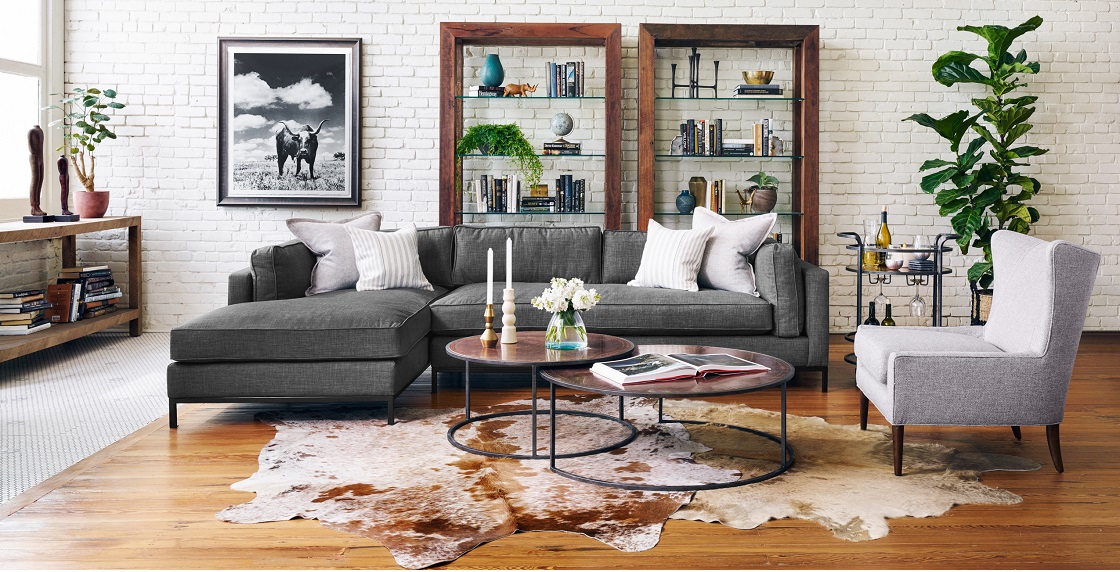
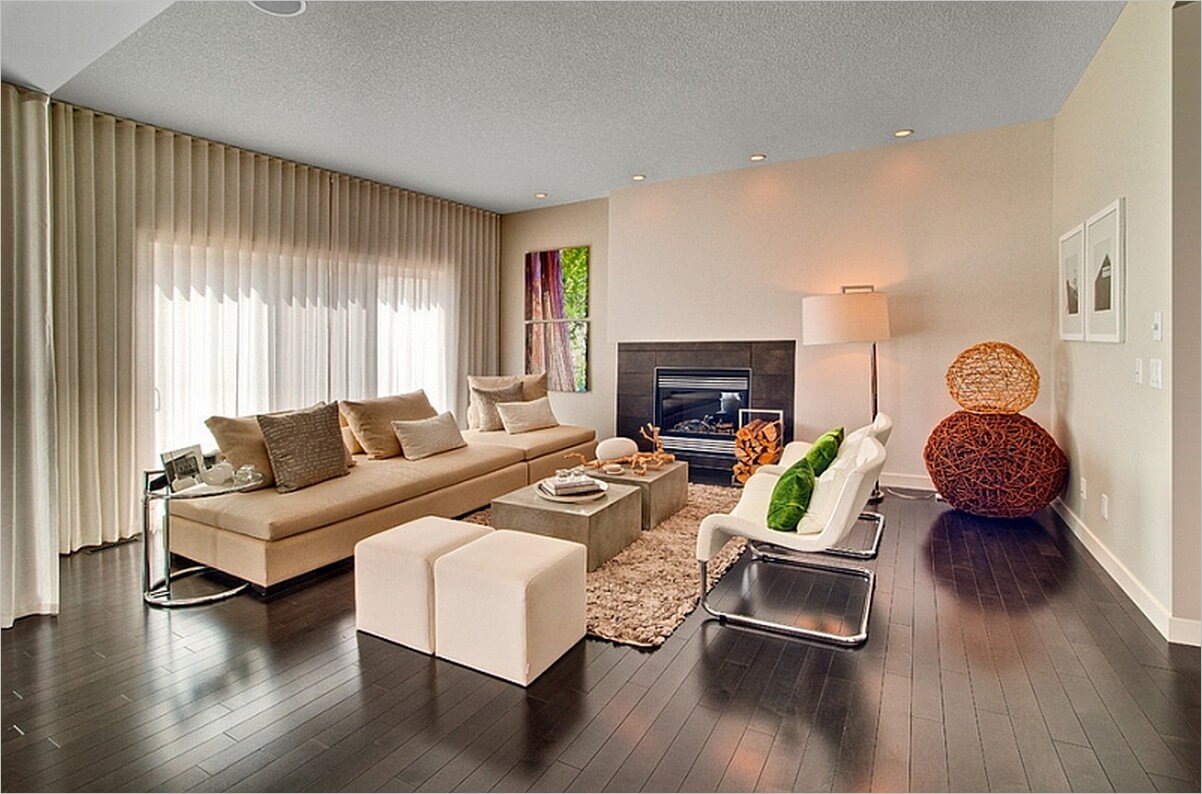
:max_bytes(150000):strip_icc()/GettyImages-642242204-9bc00f4474f040908f0286b3f2764f95.jpg)

